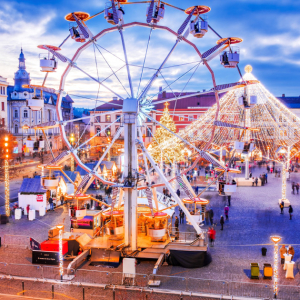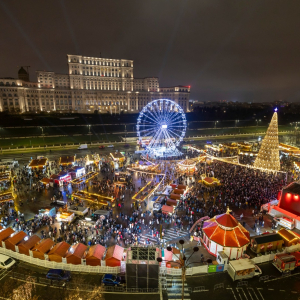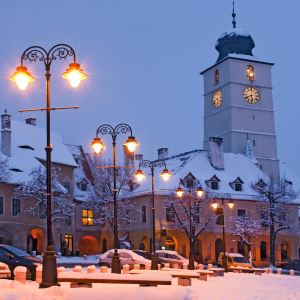Top7
TOP 7 Christmas Traditions in Romania

1. Maramureș - Christmas Celebrations with Carols and Traditional Fiddlers
Maramureș is a region renowned for its ancient traditions, carefully preserved through the centuries. One of the most cherished of these customs is caroling. The carols from this area have a solemn tone and archaic rhythm to them and are often accompanied by a group of traditional fiddlers known in romanian as ceterași.
Here, caroling is a true ritual, with groups of carolers organized by age and adhering to strict rules passed down from their ancestors. Each song conveys religious messages about the birth of Jesus, the joy of the holidays, and the connection between man and divinity.
In some villages, caroling is complemented by traditional dances and lavish feasts prepared by the hosts for the carolers. It’s an experience that blends religion, folklore, and the authentic hospitality of Maramureș.

(source: Maramuresu'Meu)
2. Bucovina – The Christmas Eve Feast
In Bucovina, religious traditions blend harmoniously with culinary ones. Here, Christmas Eve is celebrated with a grand feast known as the "Christmas Eve Dinner."
This festive meal consists of 12 dishes, symbolizing each of the 12 apostles, and includes a variety of dishes such as cozonac (sweet bread), beans, fish, and smoked plums with boiled wheat. All the dishes are fasting-friendly, and the meal is accompanied by prayers and carols.
Another unique custom is the "Icoană walk," where groups of young people go from house to house carrying carefully painted pictures of saints and religious figures, blessing homes and families alike.
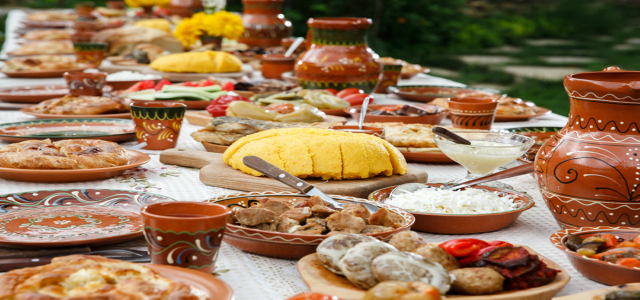
(source: Prima News)
3. Transylvania – Viflaim and Masked Performances
In Transylvanian villages, a unique tradition is the Viflaim, a dramatized reenactment of the birth of Jesus performed by the youth of the community. They take on the roles of the Magi, shepherds, and other biblical figures, wearing elaborate costumes and reciting their lines in verse.
Another local tradition is the masked performance, most particularly in Saxon villages. The masks depict comic characters or symbols of fertility and are used in dances meant to bring joy and good fortune for the coming year.

(source: BucPress)
4. Oltenia – The Star and the "Winter Călușari"
In the southern regions of Romania, specifically in Oltenia, an important tradition is the Star Procession, practiced by children who sing carols while carrying a brightly decorated star. This custom has religious roots and symbolizes the star that guided the three Magi to the village of Bethlehem.
A distinctive element of Oltenian Christmas traditions is the Winter Călușari dance, an adaptation of the Călușari dance performed in summer. This dance is considered sacred, as it is believed to ward off evil spirits and bring health and prosperity to the community.

(source: Folclor Oltenesc)
5. Moldova – The Bear and the Goat
In Moldova, the Bear Dance and Goat Dance are both spectacular and ancient traditions that add a cheerful touch to the holidays. The costumes are handmade and adorned with colorful masks. The procession is also accompanied by musical instruments like drums and flutes.
The bear symbolizes strength and the rebirth of nature, and its dance is believed to bring good fortune. The goat, on the other hand, is a comedic character, and its dance is full of energy and joy.
These customs also have an important social component, serving as a great opportunity for the community to come together and celebrate the winter holidays.
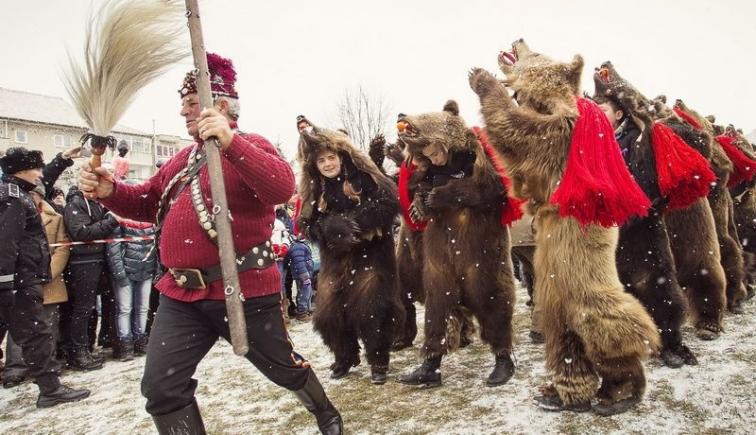
6. Banat – Groups of Young Men and Traditional Folk Costume Parades
In Banat, Christmas is marked by the formation of groups of young in romanian called cete de feciori. These are men who go caroling and take part in various traditional activities. These groups wear traditional folk costumes specific to the region, adorned with intricate embroidery and vibrant elements these clothes are passed down through generations.
A truly special moment is the folk costume parade, where the young men march through the village before starting their caroling. This tradition highlights the cultural heritage of the region and the beauty of traditional attire.
7. Dobrogea – A Blend of Cultures and Fishermen's Traditions
Dobrogea, a multicultural region, boasts many unique traditions that reflect the influence of its diverse ethnic communities. An interesting example is the tradition of carols sung in multiple languages, including Romanian, Turkish, or Greek, varying depending on the local community.
In the fishing villages along the Danube or the Black Sea, the Christmas meal features fish dishes, and fishermen hold small ceremonies to bless their nets and boats for the coming year.

